DC’s Future State event is nearing its halfway point, with stories that have already introduced readers to new or drastically-altered versions of iconic DC characters. Some of the biggest changes have been for Batman and Superman, with the former finding a new face, Tim Fox, having taken up the mantle after the apparent death of Bruce Wayne, and the latter featuring a grown Jon Kent carrying on the legacy of his father. The question of precisely how things got this way has thus far gone unanswered, but that will change next week with the release of Future State: Batman/Superman #1. Written by Gene Luen Yang, illustrated by Ben Oliver and Arif Prianto, and lettered by Tom Napolitano, the series is set in the early days of The Magistrate’s occupation of Gotham, and features the original Batman and Superman dealing with a new threat while navigating the city’s changing status quo.
The project is the latest for Yang at DC. The writer, whom The Beat named Comics Person of the Year for 2020, teamed with the art team Gurihiru for last year’s acclaimed Superman Smashes the Klan, which coincidentally was named The Beat’s top comic of the year. The Future State: Batman/Superman series also serves as a prelude to Yang’s upcoming run writing the main Batman/Superman series, where he’ll be accompanied by artists Ivan Reis and Danny Miki.
The Beat was fortunate enough to chat with Yang about Future State: Batman/Superman, his approach to writing two of DC’s most iconic characters, and what role his upcoming run on the main series will play within the DC Universe. Check out the interview with Yang, along with a preview of Future State: Batman/Superman #1, below.
Joe Grunenwald: Future State: Batman/Superman features the original versions of the characters, as opposed to the other Future State books that are set much farther into the future. How does your series seed or foreshadow what readers have seen or will see in the other Future State titles?
Gene Luen Yang: Future State really is about this terrible thing that happens to Gotham City. Gotham City gets taken over by the Magistrate, this private entity that is all about a very skewed version of law and order. Batman/Superman paves the way for Gotham to become the way it is in the other books.One of the big questions we wanted to answer was, what is the Clark Kent Superman’s place in Future State? Why isn’t he more involved in the beginning? So we want to answer that question with the story that we’re telling.
It’s sort of like a bridge. I think Batman/Superman as a series is kind of a bridge between these two big pillars in the DC Universe, so Batman/Superman: Future State is a bridge in two ways. It’s a bridge between two different ways of seeing the world, embodied by Batman and Superman, and it’s also a bridge between the DC Universe, the Gotham that we’ve known up until now, and the Gotham of Future State.
Grunenwald: You touched on this a little already, but Superman and Batman obviously have very different personalities and tactics, and I think those are reflected really nicely in the series’ first issue. Do you have any sort of guiding principle that you keep in mind when you write those characters? What do you think the most important thing to ‘get right’ about each of them is?
Yang: I did a run on a series called New Super-Man, which is about the Chinese Super-Man, and in that story we talk about the concept of yin and yang. Being a Chinese American that idea has always been around, but working on New Super-Man really gave me a chance to dive pretty deep. Maybe the yin and yang dynamic is part of the lasting power of Superman and Batman. They embody the essence of yin and yang. Superman is powered by the sun, he embodies the day, and then Batman has a cave, he’s in the earth, and he embodies the night.
The guiding principle is this balance of justice and mercy. They both care about both, but Batman definitely leans more towards justice, and Superman definitely leans towards mercy. For Batman, mercy is the little white circle in the middle of the yin, and for Superman justice is the little black circle in the middle of the yang.
Grunenwald: This series also introduces a new version of the False Face Society, a group that hasn’t been seen in Gotham in many years. Is that a concept you have a particular fondness for? How does their inclusion fit into the story you’ve set out to tell?
Yang: What we were given is that The Magistrate has made masks illegal. That’s another one of those things that differentiates Batman and Superman – Superman doesn’t wear a mask and Batman does. Superman’s version of the mask is the glasses, so he actually wears a mask when he’s a civilian, whereas Batman wears a mask when he’s a crimefighter. Another way they’re yin and yang to each other. But because that was the theme, I did look up old comics about the False Face Society. I did find those fascinating, but the False Face Society definitely wasn’t something I grew up with. It was just something that felt like it really fit with the themes of The Magistrate.
Grunenwald: The effect of the False Face serum is pretty horrific, if you really think about it. It’s an interesting way to approach that idea versus traditional masks.
Yang: I wonder if it’s that far off in the real world. Sooner or later we’re all gonna be able to do that. If you want to grow horns, you can grow horns.
Grunenwald: Ben Oliver’s work on the first issue of the series is really phenomenal, especially with some of those transformations. What’s your collaboration with him like?
Yang: It’s all through email, so we communicate directly through email. We are given these different points during the process when the writer can give some notes about the visuals. I can’t remember giving him a single note. He’s a pro. He knows what he’s doing. I first came across his work in Batwing, the New 52 series he launched with Judd Winick, and I was certainly impressed with his run on that series. I think he’s able to kind of meld a humanity in his characters with this real slick high-tech veneer. He can do both at once. In a lot of ways I think his style fits with the Future State Gotham. It fits right in. He’s able to get that slick high-tech shine to everything, but also get into the humanity and the gruesomeness of what’s happening.
Grunenwald: What are you personally enjoying within Future State? Are there any series you’ve been particularly excited about?
Yang: I got two in my pullbox last week. I got The Next Batman and I got Swamp Thing, and they’re both great. I had a lot of fun reading them. DC is gracious enough to provide me PDFs of everything I’d want to read, but there’s something about holding it in your hands, you know? And there’s also something about maintaining that contact with your local comic shop. So I got both of those issues. I think both of them were great, but The Next Batman I do think in a lot of ways is probably the most exciting of all the books in the line, at least for me, for a bunch of different reasons.
I think the editorial team did a really good job in constructing this event. 2020 was hard for everybody, so for them to be able to pull something like this off…I feel like it does at least obliquely address some of the things that we’ve all been thinking about for over a year now, and it does it in a way that’s still fun and entertaining and fits in with the character of the DC Universe.
Grunenwald: I’d be remiss if I didn’t ask about what’s next post-Future State. Batman/Superman looks to be exploring different versions of those characters from across the multiverse. What if anything can you tease about that series?
Yang: I’m having so much fun with Ivan and Danny and the rest of the creative team. It’s really been a blast. Also I’m kind of shocked that the editorial team let me run with this idea. Part of it is that, in [Death Metal], there’s been much more exploration of different universes within the DC omniverse, and I feel like I’ve gotten to play with some of that.
One of the things that I did want to do was kind of use classic versions of these classic characters. The version of Batman and the version of Superman that we’re going to be seeing in issue #16, Ivan and my first issue, is going to be pretty heavily influenced by the versions of Batman and Superman from the 1940s serials. It’s kind of shocking how much influence those movie serials had, in the mood and the tone, all of that.
The three villains that we’re doing are all versions of villains that were in the old serials that never made the jump to comics. There’s the Spider Lady, who is a Superman villain from 1948; and then there’s the Unknown Wizard, which is our version of the Invisible Wizard who is a Batman villain; and then we have Doctor Atom, who is a stand-in for Atom Man, who’s another Superman villain.
Grunenwald: What role does Batman/Superman play in the larger DC Universe and the Infinite Frontier initiative?
Yang: I’ll say that, in each issue of that first storyline that Ivan and I are working on, most of the pages in each issue are in those alternative universes, but not all. We do have some pages that are set on Earth-0, in the main DC Universe.
Future State: Batman/Superman #1 arrives in stores next Tuesday, January 26th.


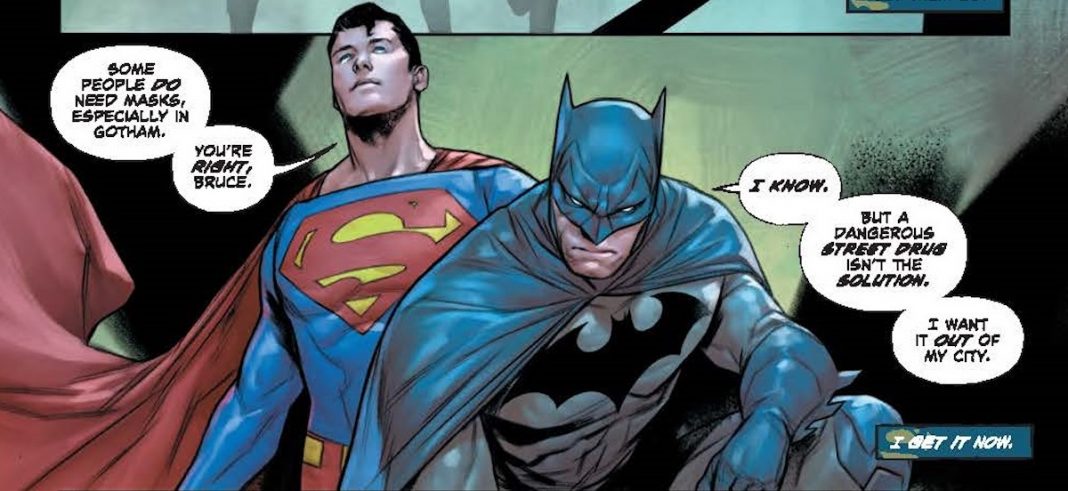

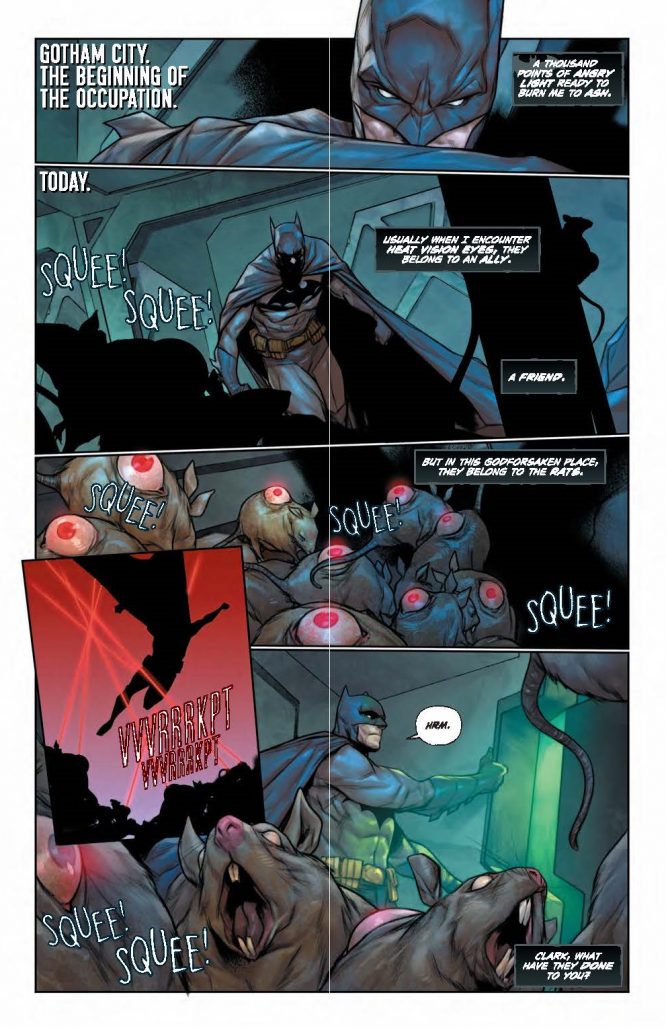
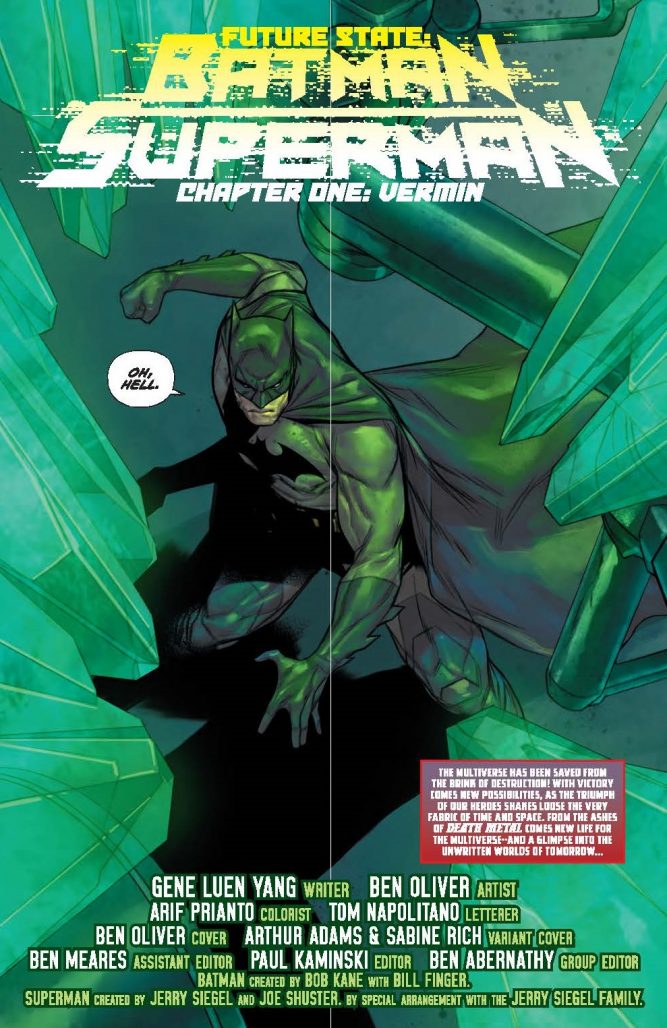
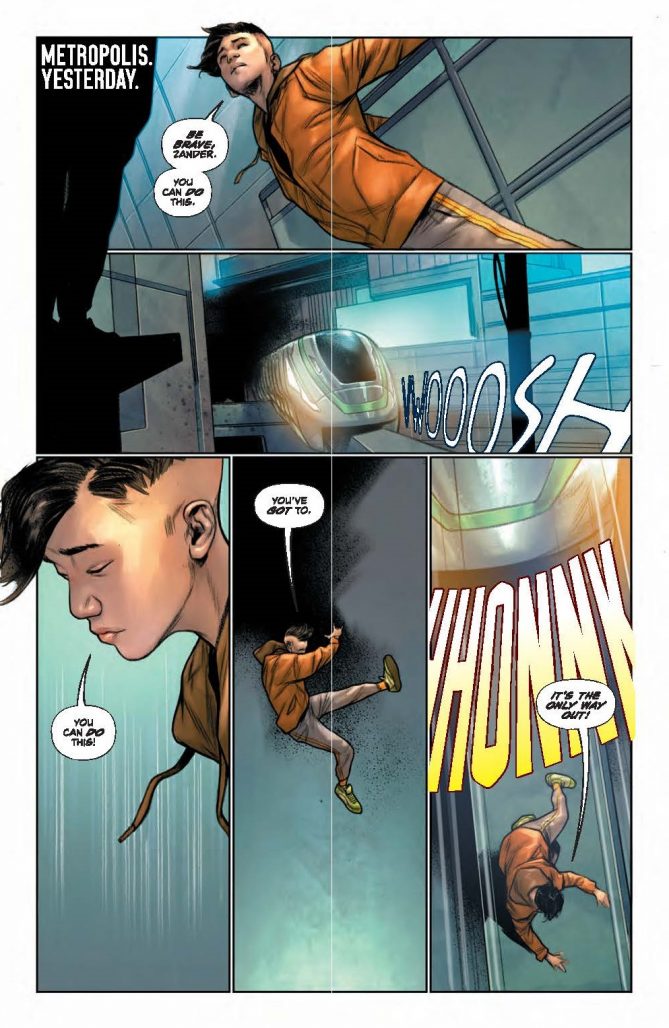
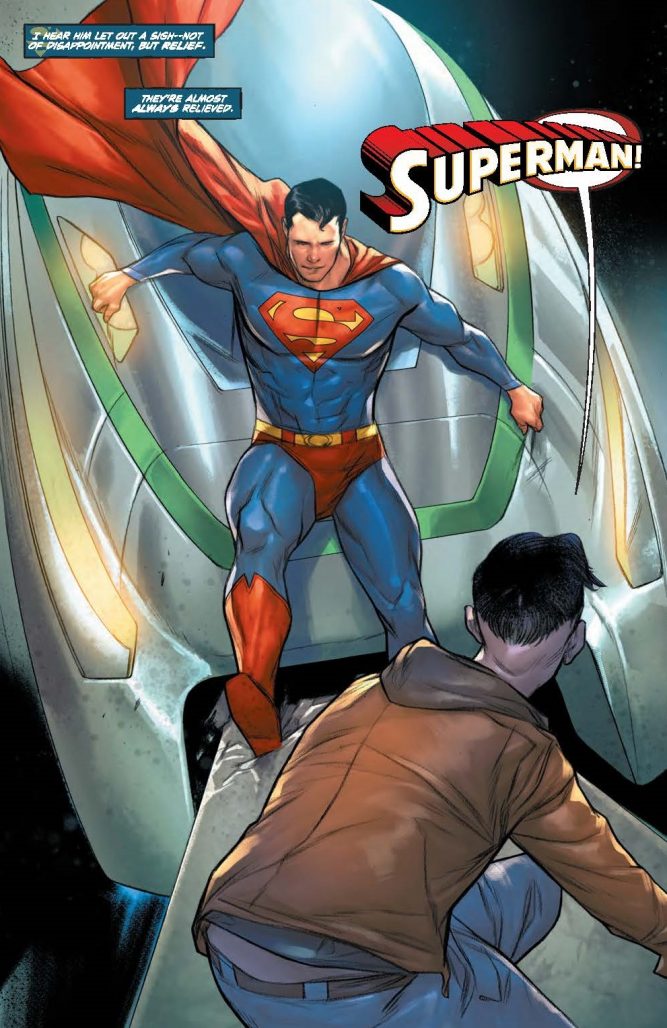
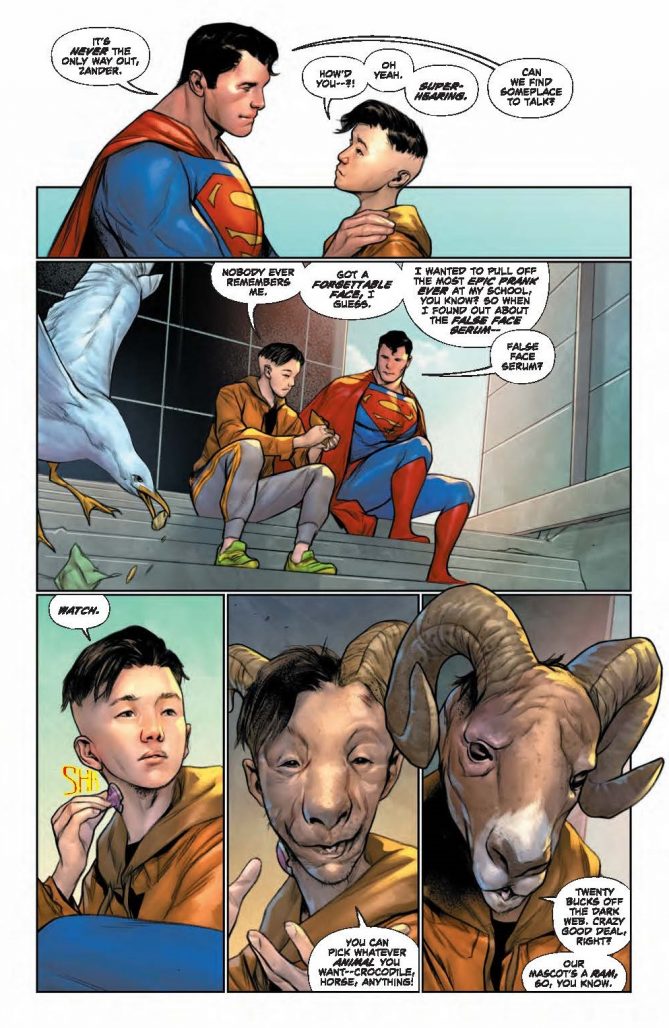
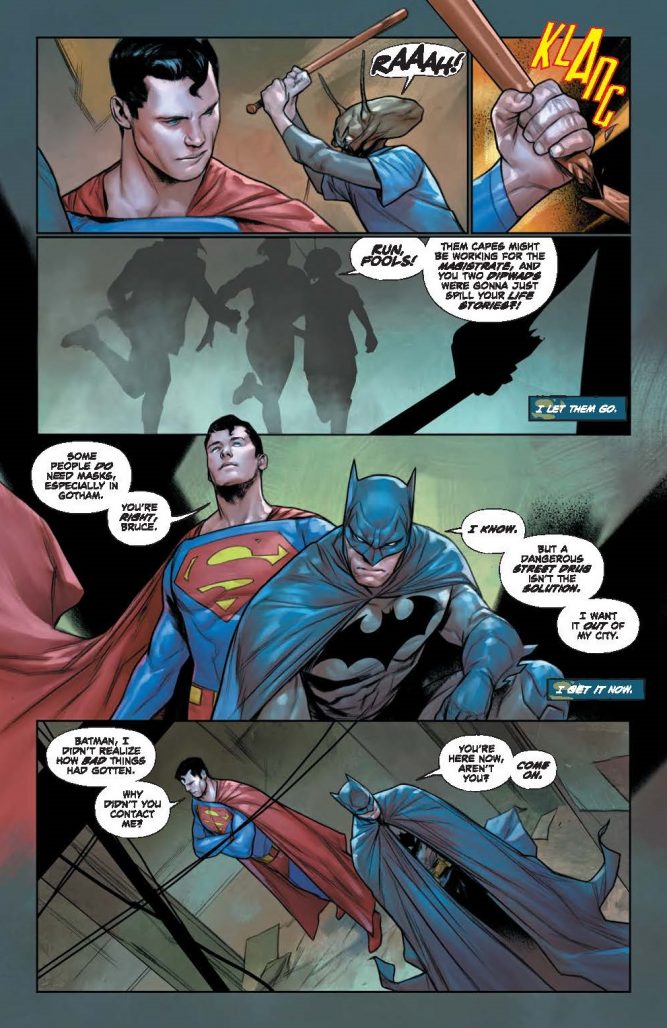
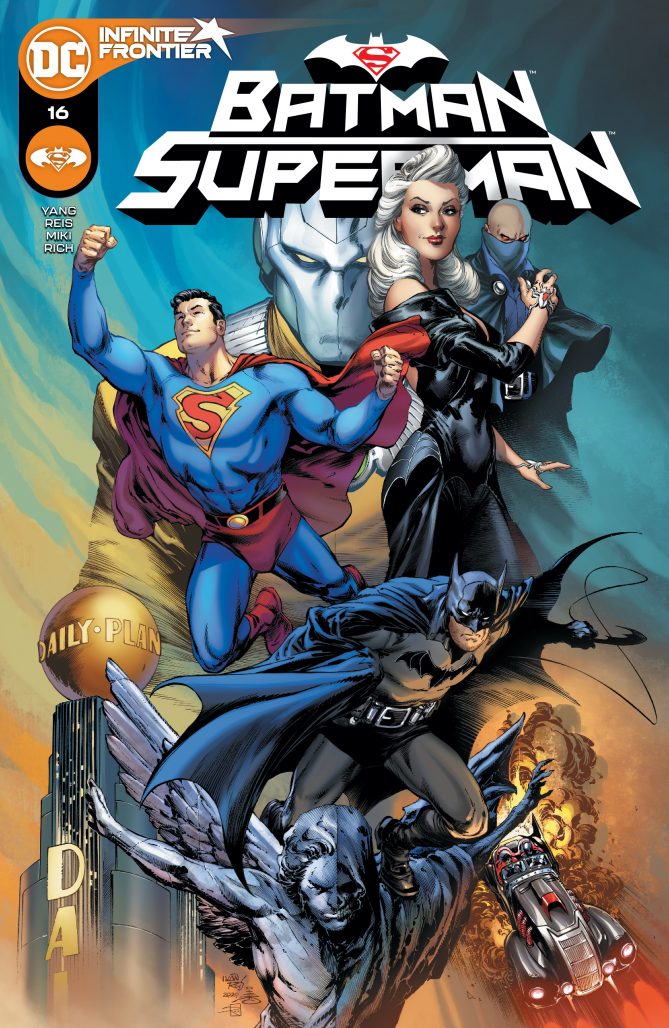





Gene’s books are the ones I most look forward to. I hope DC gives him more and more projects. I think he’d be an ideal writer for Shazam!, maybe with Sen art. Or more Superman stories like Smashes the Klan.
Comments are closed.